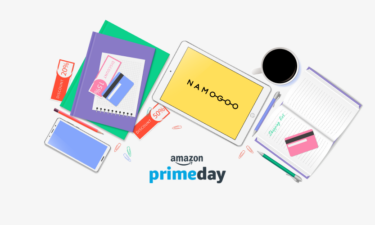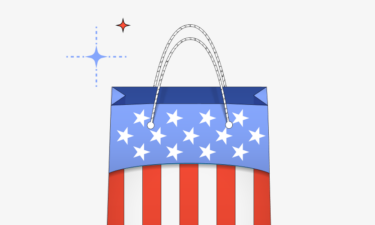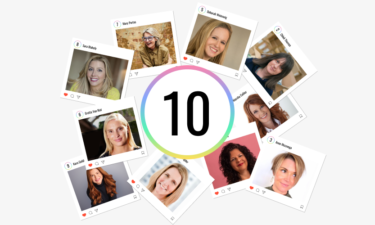Bonus material: 5 Types of Customers & What Motivates Them Guide
by Namogoo & Microsoft
Customer perceived value can be tricky for brands to get right.
At first glance, it seems like it means the value customers get from a product relative to its price. But that is only one component of customer perceived value (CPV).
With so many options on the market, statistics show over 80% of consumers research products online before making a purchase decision[*]. And this goes way beyond comparing and checking off the right features and specifications.
The decision to buy often comes down to the value your products, service, or brand delivers.
So if you’re only focusing on how much value customers get for the price you’re charging, you’re missing opportunities to convert new customers and make more sales. Even worse, you may be severely undervaluing your brand.
That’s why we’re diving into the power of customer perceived value in this guide. You’ll learn what it is, why it’s crucial to understand it, and how to improve yours today.
What is Customer Perceived Value?
How Your Customers Determine Value Matters a Lot
Why Should You Improve Customer Perceived Value?
How to Influence and Increase Customer Perceived Value
How To Measure Customer Perceived Value
Time To Improve Your Customer Perceived Value Today
What is Customer Perceived Value?
Customer perceived value is defined as what your customers believe that they stand to gain or benefit from purchasing from your brand compared to the price they pay.
CPV is all about what shoppers think your offerings are worth. How will buying and using your products change their life? What else will they earn by buying from your brand specifically?
Customer Perceived Benefit – Perceived Cost = Customer Perceived Value (CPV)
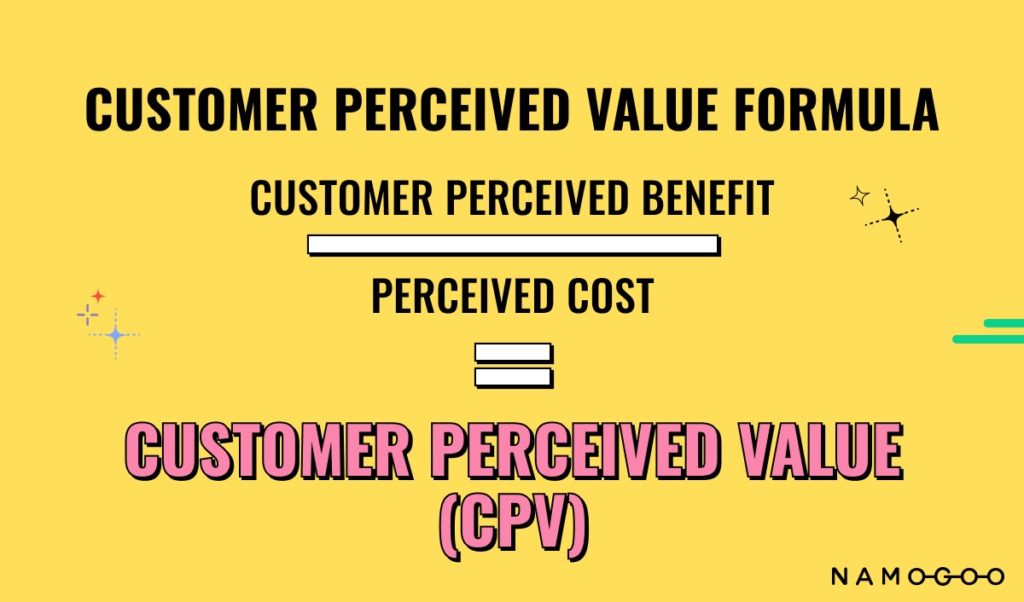
If the perceived value of the benefits are greater than what it costs to purchase your product, your customer perceived value will be positive and higher. But if shoppers can’t see the value in what you’re offering for the price, you’ll have a lower (or potentially negative) customer perceived value.
How Your Customers Determine Value Matters a Lot
Shoppers must consider a slew of factors when evaluating whether your products are worth the price tag. Besides comparing the obvious features and specs, they’ll also consider your potential value on three levels:
- Physical. What does your product feel like? Does it look good? Is it too big or too small? Is it the right color?
- Logical. Do I really need this? How will it help improve my life? Will it save me time? Will it solve my problem? What do I stand to lose by not buying it?
- Emotional. How does this product make me feel? Will I be happier, less stressed, more attractive, etc.? Will this elevate my social status? How will I feel if I don’t buy this product?
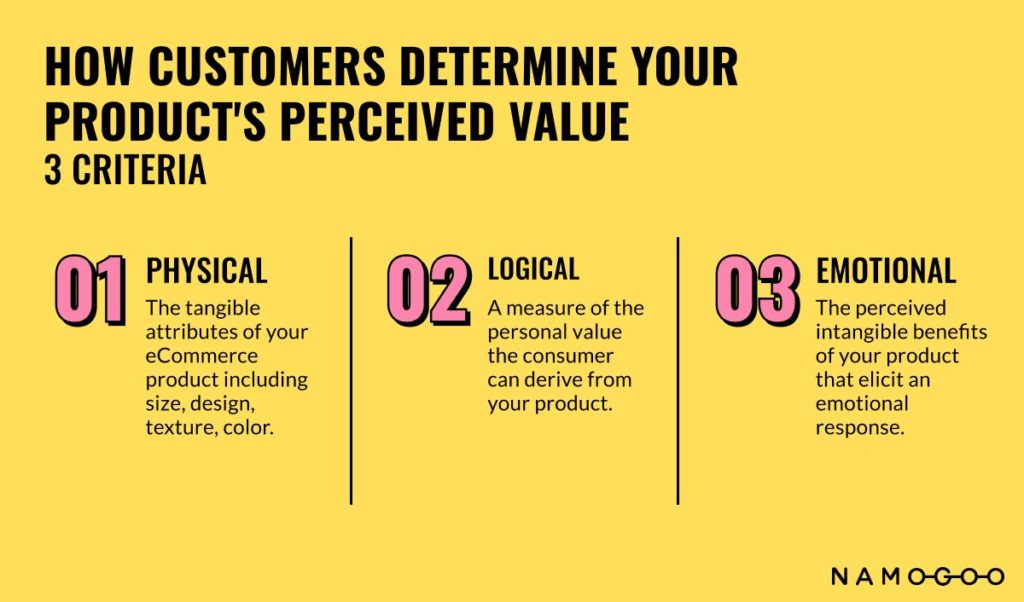
This is how shoppers decide whether your brand, products, or service not only fits their needs, but meets (or exceeds!) them for the price.
So if you’re only showing customers why your offerings are a great value on price alone, you’re missing the chance to prove your value on the deeper levels they may care about more.
And that’s just one reason focusing on CPV is so essential.
Why Should You Improve Customer Perceived Value?
When shoppers consider your brand and its products valuable and beneficial, you’ll score a ton of positive perks, such as:
- More conversions. Convincing shoppers you’re the right fit means you’ll make more sales.
- Better customer reviews. Giving customers an accurate description of your products, outlining how they’ll benefit from them, and delivering on your promises leads to happier customers. Satisfied customers then leave glowing reviews that give people new to your brand the confidence to also buy from you.
- More referrals. Happy customers love recommending your brand or products to everyone they know. You’ll soon become the go-to brand people can’t stop talking about. Now you’ll expand your customer base without increasing your customer acquisition costs (a total win!).
So as you can see, a higher customer perceived value makes it way easier to grow your brand and, ultimately, costs less for you to do so. That’s why improving your CPV is worth your time and attention as a marketer or business owner.
Let’s dive into exactly how to do that next.
How to Influence and Increase Customer Perceived Value
Use these six proven strategies, and you’ll have no trouble boosting your product’s perceived value and accelerating your brand’s growth:
1. Focus on Your Time-Saving Attributes
American entrepreneur, author, and motivational speaker Jim Rohn once said:
“Time is more valuable than money. You can get more money, but you cannot get more time.”
With everyone’s busy lives and fast-paced schedules, it often feels like there isn’t enough time in the day to accomplish everything we want. That’s why so many shoppers search for products that save time or offer a convenience they can’t find anywhere else.
So the more you can highlight your product’s time-saving features, the higher your CPV will be.
Think about the best ways your product gives customers more time in their day. Does it cut out a time-consuming step? Is it more efficient than comparable products on the market? What’s the convenience factor?
Make sure these key features are visible throughout your branding and messaging. Then promote them as often as possible.
2. Emphasize “Feel Good” Attributes
Remember how we said shoppers evaluate brands and products on an emotional level? How people feel when they think about, buy from, and talk about your brand plays a huge role in their decision to do so.
Knowing this, try to foster an emotional connection with your customers based on your brand’s:
- Mission, vision and values
- Quality and craftsmanship
- Environment-friendly perks
- Charitable outreach
- Accessibility and ease of use
Spend some time elaborating on these distinguishable features, and you’ll let customers get to know and respect your brand. The more aligned they are, the higher your CPV will be.
3. Build Your Brand’s Reputation and Credibility
The next task to tackle is improving your brand’s perception.
Even if you craft the best product — with every possible feature customers want — you’ll have a hard time attracting customers and closing sales if your brand isn’t seen as trustworthy and credible.
There are three easy ways to boost your brand’s reputation and credibility:
- Use testimonials from customers throughout your brand messages, website, product pages, and social media channels. Start collecting reviews and displaying these to instantly build trust with people new to your brand. We’ll talk more about this later.
- Show off customer reviews featuring user-generated content (UGC), which are images or videos customers create about your brand and its products. Once shoppers see that other people have used your products and loved the experience, they’ll be more likely to trust your brand and make a purchase too.
- Partner with trustworthy brands or influencers with similar values. If your audience is already familiar with and trusts these brands, partnering with them will boost your brand’s credibility as a result.
These three steps will encourage shoppers to trust your brand. And brands with outstanding reputations often have a sky-high CPV.
4. Use Testimonials Throughout Your Site
Like we mentioned earlier, collecting and displaying customer reviews is one of the best tactics to improve your customer perceived value, which is why we’re elaborating more on it in this section.
Instead of boasting about how great your product is, you can let your existing customers do the talking and heavy lifting for you. Allow them to share their thoughts and honest opinions, and you’ll have a marketing machine your shoppers can actually relate to.
Shoppers often believe feedback from real customers is much more reliable than anything you could write on your website. As a result, reviews and testimonials build trust for new customers.
Reviews might even mention a perk you haven’t ever advertised yet appeals to your target audience. After all, who better to address pain points felt by your audience than the very customers you’re targeting?
Once shoppers see that other people love your brand and find it valuable, they’ll also view it as valuable. You’ll automatically boost your CPV and increase the likelihood of shoppers buying from you.
5. Offer Free Returns
Another excellent way to improve your CPV is to take the risk out of buying for shoppers, which you can do by offering free returns.
This is the perfect way for potential customers to try your brand risk-free (they can return it for free if they don’t love it) and see how it will meet their needs. Once they try it and see it delivers on all the promises you made, they’ll have a first-hand experience of the value it provides.
This also acts as a form of social proof, which further elevates your brand’s perceived value. After all, it shows confidence in the quality and value of your products. Brands that receive a high volume of returns likely wouldn’t offer them for free!
Since you have nothing to hide, consider offering free returns for customers and make sure your website visitors can see this risk-free policy clearly. You’ll likely see an increase in sales and new customers onboarding.
6. Offer Intent-Based Promotions
One thing that lowers your perceived value is throwing generic discounts at new customers.
For starters, it becomes the anchor price for which customers expect to pay now and into the future, which makes it difficult to command full price later on.
Customers may also view your brand as the cheaper alternative and only turn to it if it fits that bill. Otherwise, they’ll find another brand that does.
To get around this and improve your customer perceived value simultaneously, it pays to get smart about the promotions you use and become more strategic with them.
You can achieve this by only offering incentives to shoppers that need them to complete their purchases, to only offering the minimum promotion required to convert each individual shopper, based on their customer intent.
Rather than training your visitors to expect a discount to convert, and devaluing your products, leveraging Intent-Based Promotions helps to avoid degrading your customer perceived value by not providing discounts to those who either would convert without one, or had no intention to purchase in the first place.
How To Measure Customer Perceived Value
Keeping track of your customer perceived value isn’t as straightforward as some other eCommerce metrics like conversion rate or average order value. That’s because it is an intangible, qualitative key performance indicator that can’t be quantified, but that doesn’t mean you shouldn’t measure it.
In fact, eCommerce teams should absolutely track their efforts from the six tactics we shared so you can see if they’re working and, if they’re not, you can make some adjustments to ensure they do.
So, how do you measure customer perceived value? There are two methods:
1. Ask Your Customers for Feedback
Collecting feedback from your customers is key for a number of different reasons.
Doing so can help you improve your product, service, buying journey, and more and it can also help you identify problems before they snowball into huge issues.
Capturing customer feedback can also fill you into your customer’s perceived value and whether or not it needs work.
To garner in-depth feedback from your customers, provide surveys after each purchase and leave room for open-ended answers so that you can encourage customers to leave their honest feedback.
After all, it’s better to get this information now than to lose out on potential sales later.
2. See What Consumers Are Saying About Your Brand
Is your brand being mentioned in online reviews or are you seeing people tag you on social media?
If so, have your team dive deeper into these reviews to see exactly what consumers have to say, both positive and negative, so you can gather this important intel and put it to good use.
This key information can then be used to fix issues and elevate your customer perceived value or build on the positive momentum if it’s there in glowing reviews.
Share those happy reviews and you’ll quickly build your brand’s customer perceived value.
You can then create a spreadsheet dedicated just to customer perceived value to keep track of your efforts and mentions on a consistent basis and, by doing so, you’ll be able to tell if your CPV is going up.
Time To Improve Your Customer Perceived Value Today
Your job is to increase your brand’s perceived value so shoppers can’t help but see it as the best solution for their needs.
Fortunately, the six tactics shared in this guide will help you do just that.
Follow them, and you’ll be well on your way to increasing your customer perceived value and growing both your sales and community.




